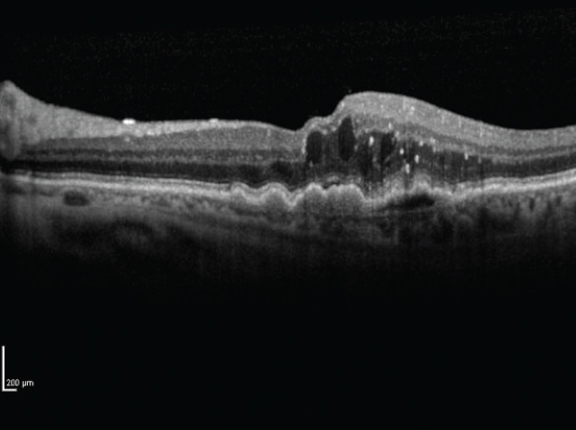 |
Calcium channel blockers, which treat hypertension, could be linked to an increased risk of wet AMD. Click image to enlarge. |
Research has suggested a potential link between AMD and several systemic health issues, including cardiovascular, cerebrovascular and chronic kidney diseases, in addition to diabetes, hypertension, dyslipidemia and neurodegenerative disorders. Looking into whether systemic meds may contribute to this sight-threatening condition, a team of investigators from Finland found that the use of second-generation calcium channel blockers—which are typically used to treat high blood pressure—appeared to be tied to an increased risk of wet AMD. Based on the study’s findings, the authors reported that individuals with hypertension may be predisposed to developing wet AMD.
On the other hand, patients who took the blood pressure-lowering drug ramipril or digoxin—a medication that works to prevent congestive heart failure and arrhythmias—seemed to be less likely to develop the eye disease.
The retrospective study, which was a follow-up to the Fin CARING investigation, included roughly 260,000 individuals who received care from 2001 to 2017. Half the participants had diabetes, while the other half were healthy controls. The study analyzed the potential association between 85 generic systemic drugs and the incidence of wet AMD.
At the investigation’s 10-year follow-up, approximately 2,960 participants had developed wet AMD, and the incidence rate was 1.15 per 1,000 persons/year. The authors also observed an increased AMD risk in patients exposed to calcium channel blockers amlodipine (internal rate of return: 1.33) and felodipine (1.24). Similarly, bicalutamide (2.14), an anti-cancer treatment, estradiol (1.20), an estrogen hormone drug, and cholesterol-lowering medication atorvastatin (1.22) were all linked to higher AMD risk, while digoxin and ramipril were linked to a lower incidence of wet AMD (0.75 and 0.80, respectively).
The association between calcium channel blockers and wet AMD may be tied to vascular leakage and edema in the retina, since edema is a common issue in many patients who use higher doses of this medication, the authors said.
To prevent this, the investigators suggested a renin-angiotensin system (RAS) blocker, such as an angiotensin-converting enzyme (ACE) inhibitor or an angiotensin receptor blocker, which can normalize hydrostatic pressure by causing postcapillary dilation.
Considering drugs that appear to present lower AMD risk, ramipril is an ACE inhibitor, and RAS repression has been recently shown to prevent wet AMD in hypertensive patients. Additionally, digoxin is an inhibitor of sodium-potassium adenosine triphosphatase, and previous investigations suggest it can inhibit retinal ischemia and reduce choroidal neovascularization at Bruch’s membrane rupture sites.
Loukovaara S, Auvinen A, Haukka J. Associations between systemic medications and development of wet age-related macular degeneration. Acta Ophthalmologica. November 14, 2021. [Epub ahead of print]. |

